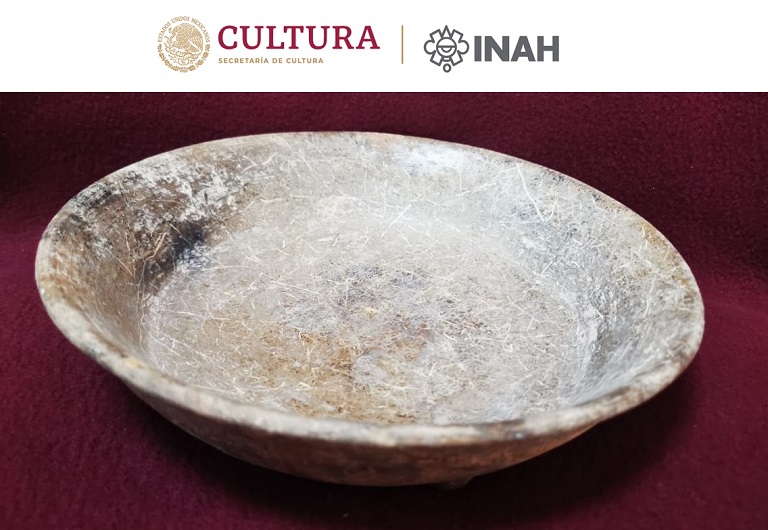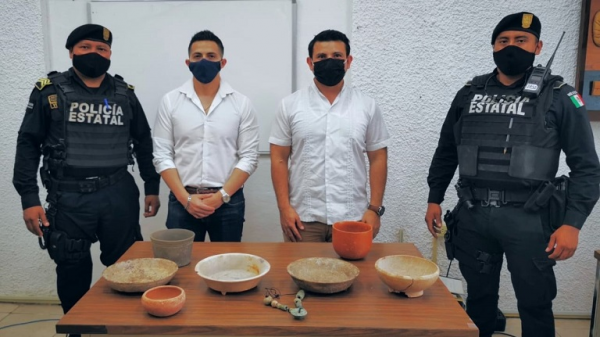Mérida, Yucatán, (April 9, 2021).- The National Institute of Anthropology and History in the state of Yucatán (INAH), recovered eight archaeological pieces that were intended to be commercialized on the internet.
The recovery was carried out in three operations by the INAH Legal Department, personnel from the Archeology Section of the INAH Yucatán Center, and with the tactical support of special operations units of the Secretary of Public Security.

According to the archaeologists Ileana Isabel Ancona Aragón and Pedro Rogelio Xuluc Balam, from INAH Yucatán, the recovered archaeological monuments consist of seven ceramic pieces, among which are pieces from the Chablekal Group, Chicxulub type incised from the Late Classic period AD 750-900 AD. Mayan culture, which arrived from the Usumacinta region, as a result of long-distance exchange and it is recurrent to find them as offerings in human burials in northern Yucatán.

Also, pieces from the Muna Group, Black Sacalum Type on slate from the Late Classic period 750-900 AD and that belonged to the Cehpech sphere; various bowls and plates, and a jade necklace made up of eleven beads.
The recovered vessels are characteristic of the repertoire of mortuary contexts of the northern Yucatan sites, especially the Mérida region, the Puuc area, and surrounding areas.

The archaeological pieces will be sent to the Ceramoteca of the INAH Yucatán Center based in Mérida, so that they form part of its collections, and can be appreciated by all students, archaeologists and researchers. Once the investigations are completed, its exhibition is contemplated in the museums of the INAH in Yucatan.

The Chamber of Representatives approved this April 7, by 451 votes in favor, one against and one abstention, reforms of article 51 of the Federal Law on Monuments and Archaeological, Artistic and Historical Zones, which establishes greater penalties of five to 12 years of prison and three to five thousand times the Measurement and Updating Unit (UMA) to whoever seizes a historical, artistic monument or archaeological piece of furniture, without the consent of the INAH.

The Federal Law on Monuments and Archaeological, Artistic and Historical Zones say in articles 27 and 28 that archaeological monuments are property of the Nation, inalienable and imprescriptible, and are the product of cultures prior to the establishment of the Hispanic in the national territory, as well as the human remains, flora and fauna, related to those cultures.



